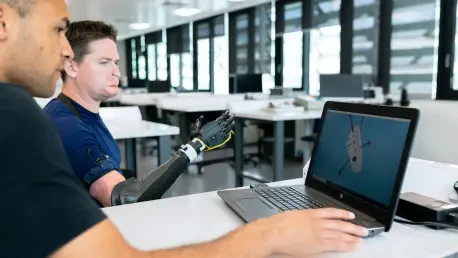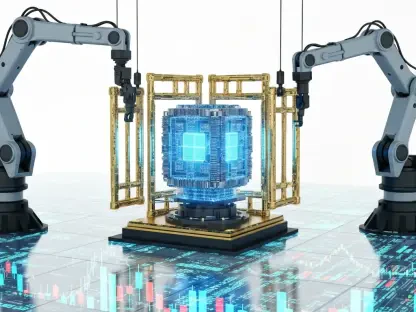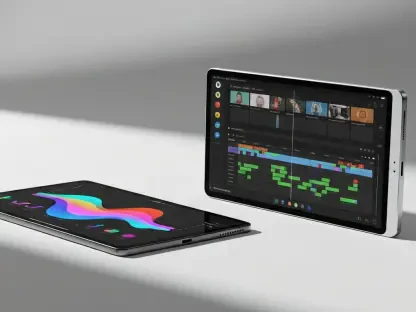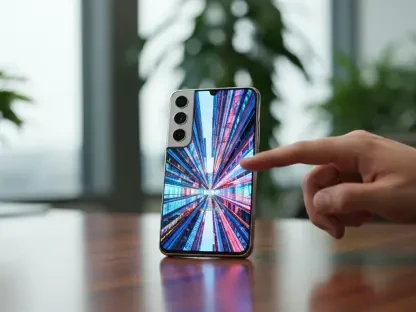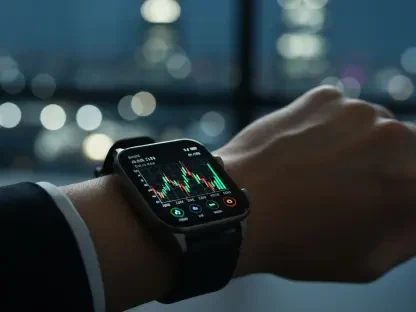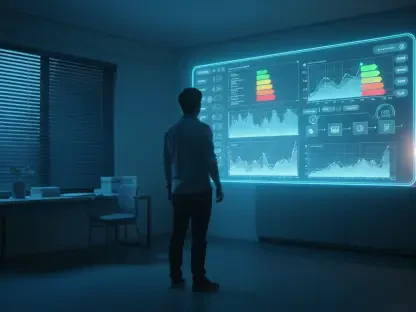Oscar Vail is a leading technology expert with his finger on the pulse of emerging fields, including quantum computing, robotics, and AI. With a foundation in innovation and a visionary approach, Vail offers insights into how AI-guided medical robots are revolutionizing healthcare. This interview delves into how AI is crafting new possibilities in precision medical procedures, highlighting advances, challenges, and future directions.
What inspired you to explore the potential of AI guidance in medical procedures?
The complexity and precision required in medical procedures like reaching deep-seated nodules always intrigued me. These high-stakes interventions demand accuracy beyond what human hands can deliver consistently. Witnessing AI’s capacity to analyze vast amounts of data and exceed human limitations inspired me to consider its possibilities in medicine. AI guidance could transform how we approach these challenging tasks by minimizing risks and enhancing outcomes.
How do medical robots with AI assist physicians in performing complex tasks more effectively?
AI-integrated robots act as extensions of a physician’s capabilities. They excel in precision tasks by automating parts of the process—like steering needles—where minute deviations can have serious consequences. AI systems evaluate anatomical data in real-time, updating strategies as more information becomes available, thus supporting physicians in navigating intricate anatomical landscapes.
Could you explain the specific challenges involved in reaching deep-seated cancerous nodules?
Cancerous nodules deep within the body present a daunting challenge due to their size and their proximity to essential vessels and tissues. The risks of inaccurate needle placement are considerable, including potential damage to blood vessels and the possibility of missing the target entirely. AI guidance mitigates these risks by calculating the optimal pathways and adjustments, adapting to each patient’s unique anatomical shifts.
How does AI guidance differ from traditional image guidance in medical procedures?
Traditional image-guided techniques rely heavily on static images for planning, which can hinder adaptability during live procedures. AI guidance supersedes this by dynamically interpreting patient anatomy, offering real-time adjustments as the procedure progresses. This adaptability provides significant advantages, such as enhanced anatomical perception, allowing for precise targeting and minimal invasiveness.
What makes AI-guided robots more accurate and precise in needle guidance compared to human physicians?
AI-guided robots capitalize on advanced algorithms that predict the best possible trajectory for a needle, considering anatomical variability and obstacles. Their precision surpasses human capabilities by consistently applying these algorithms in real-time, reducing the likelihood of human error and increasing confidence in tool placement.
Can you elaborate on the four components of AI guidance mentioned in your article?
Each component represents a sequence of actions AI undertakes during a procedure. Firstly, AI perceives anatomy by identifying targets and obstacles within a patient. Secondly, it plans instrument motions, computing safe trajectories that navigate around sensitive tissues. Thirdly, AI perceives the instrument’s state, tracking its position and progress, ensuring the procedure remains on course. Finally, it performs instrument motions autonomously, steering needles skillfully to precise locations.
Could you describe the different degrees of AI guidance outlined in your article?
The degrees balance AI autonomy with physician oversight. They range from eyes-on/hands-on, where AI assists the physician, to full AI guidance where AI handles everything with minimal intervention. The nuances each degree provides cater to varying levels of confidence and comfort in AI interaction, ensuring thorough oversight while maintaining procedure efficiency.
What are the critical barriers to achieving widespread clinical adoption of AI guidance in medical procedures?
Safety guarantees are paramount, alongside fitting AI systems within existing regulatory frameworks. There’s a technical hurdle in integrating AI smoothly into clinical workflows and ensuring intuitive interfaces for physicians. Overcoming these barriers involves fostering collaboration between tech developers and medical professionals to create solutions that satisfy medical standards and regulatory requirements.
How do you envision the role of physician-AI interfaces evolving with increased levels of AI guidance?
As AI interfaces advance, I foresee them becoming more intuitive and interactive, supporting physicians in leveraging AI capabilities with greater ease and confidence. The development of these interfaces will likely focus on enhancing user experience while ensuring physicians retain an ultimate supervisory role.
What future breakthroughs do you anticipate in AI and robotics that could further advance medical procedures?
I expect breakthroughs in AI algorithms to refine diagnostic processes and therapeutic precision, and in robotics to enhance surgical capabilities, bringing automation and accuracy to new heights. Innovations in these fields will continue to expand the scope of what AI and robotics can accomplish, promising a future where medical interventions become safer, less invasive, and highly personalized.
